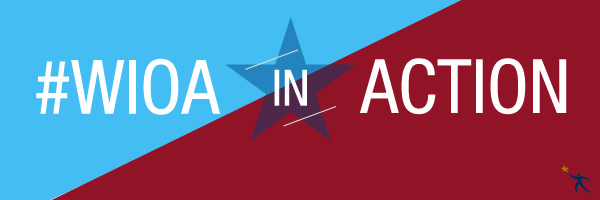WIOA in Action: Training for Success in Baltimore Health Care Careers
 •
•
The federal Workforce Investment Act has a real impact on people’s lives. I know. As Assistant Director for Youth Services for Baltimore’s Office of Economic Development I’ve seen it in action. And that’s why I’m excited that a new-and-improved WIA – the Workforce Innovation and Opportunity Act – could help even more people like Howard.
Last year, a 20-year-old named Howard entered the Healthcare Careers Alliance program, a job-training program for careers in healthcare, Baltimore’s biggest employment sector. About 75 youth each year are selected for this program, which is supported in part by federal WIA funds. They receive certification and on-the-job training as clerical associates, client service representatives, nursing assistants, dietary aids, medical records clerks, and a host of other hospital-related jobs.

Howard had spent much of his life in foster homes and experienced many of the struggles shared by the approximately 400,000 youth each year who are in state care. Their hardships intensify after they turn 18 – the cutoff for support in many states. Young adults “aging out” out of foster care face financial, emotional and societal challenges, including homelessness, as they lack the safety net provided by families as they venture into adulthood.
The Healthcare Careers Alliance program represented a potential life-line to Howard. Once participants complete training, they are placed in internships at a partner hospital and, if successful, they are offered full-time jobs earning a least $8.50 an hour, plus benefits. Also, health-care jobs have clear “career ladders” that lead to better jobs and pay, and many times hospitals are willing to help their employees pay for additional training to get those jobs, including helping to cover the cost of courses at two-year or four-year higher education institutions.
Since 2001, the Healthcare Careers Alliance has trained 283 participants and placed 83 percent in full-time employment. Would Howard be another success story?
Howard began with an interview with Sinai Hospital’s Patient Transport Department at Sinai Hospital. As it was happening, Howard sensed the interview was not going well. He was nervous and unfamiliar with some of the customer service-related questions coming at him. In reporting back to staff at HCA, the hiring manager confirmed all of this by relaying that Howard’s interviewing skills had been very poor.
An unsuccessful interview like this might have been the end of the line for Howard’s chances with a health care job. However, the value of a program like HCA is that the staff there were able to support him, and help him work on his interviewing skills and his confidence. They didn’t give up on Howard and they didn’t let Howard give up on himself.
When he started the training, Howard was an enthusiastic participant. He began of projecting a professional image in the workplace. He came to training every day, arriving on time and wearing a shirt and tie. This was great preparation, because another chance with the Patient Transport Department manager would be coming.
During Howard’s internship at one of the partner hospitals, Sinai Hospital of Baltimore, he had the opportunity to show his capabilities – strengths that had not come across in the interview — as well as the skills he was learning through the program’s training classes. His excellent customer service abilities grabbed the attention of patients, family members and hospital staff alike.
The manager was impressed by Howard’s progress and offered him a full-time job as a patient transporter. Howard was thrilled. As Howard put it, being hired by Sinai Hospital has been a “major step toward being successfully independent.”
We are excited by the success of programs like HCA because they empower young people like Howard and give them a shot at a better life through providing a path to a steady job and the support to work toward a career. Programs like these give young Americans at risk for falling off track the opportunities they need to train hands-on within industries that are hiring. And that’s what WIOA is all about. There are so many more Howards across our country who deserve a chance.
Ernest Dorsey focuses on youth services for the Baltimore City Mayor’s Office of Employment Development (MOED). In partnership with theBaltimore Workforce Investment Board (BWIB) Youth Council, MOED uses a competitive process to select youth service programs to operate workforce development programs through WIA. The overall goal is assisting economically disadvantaged Baltimore youth ages of 16 to 21 with educational attainment, skill development and employment.








